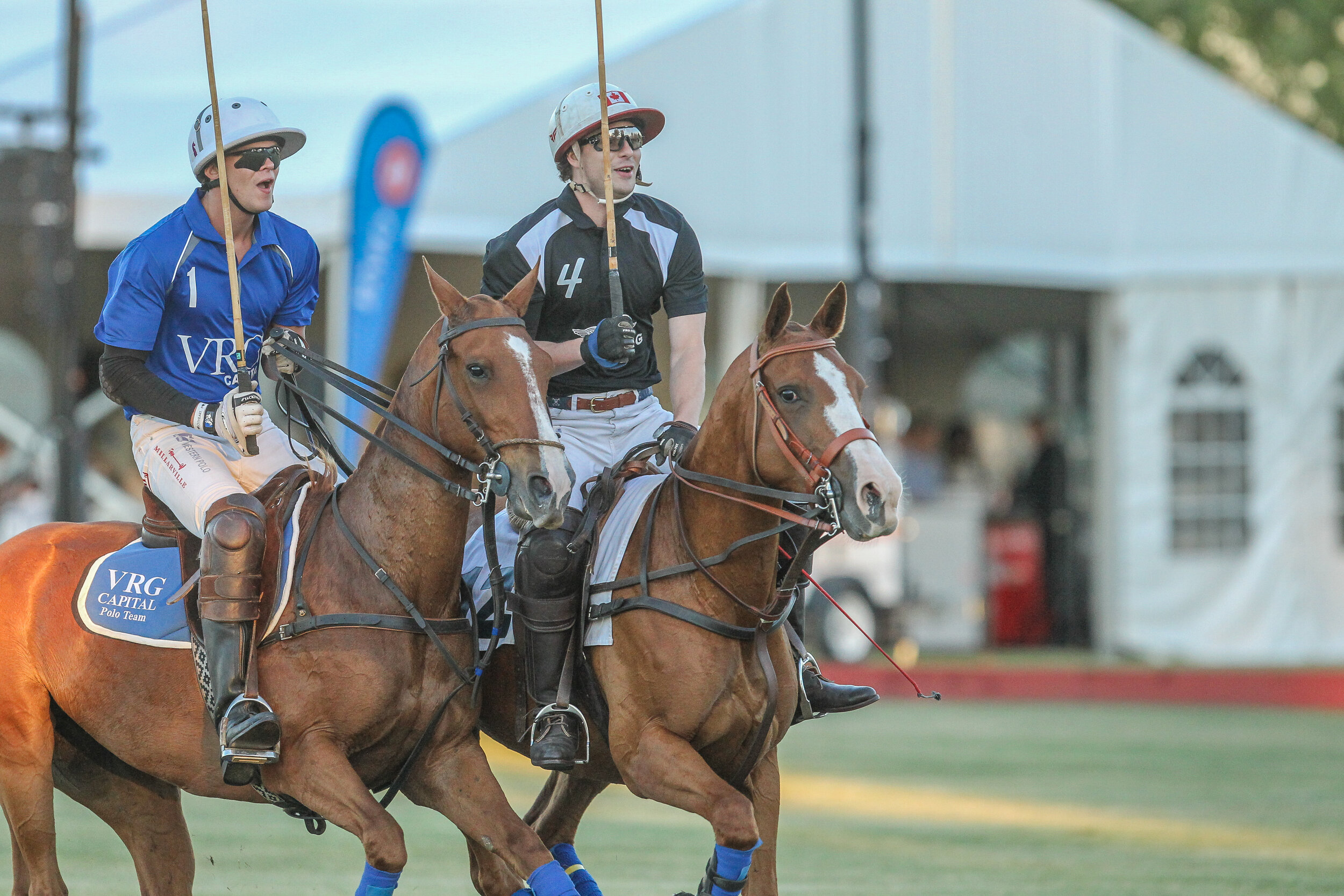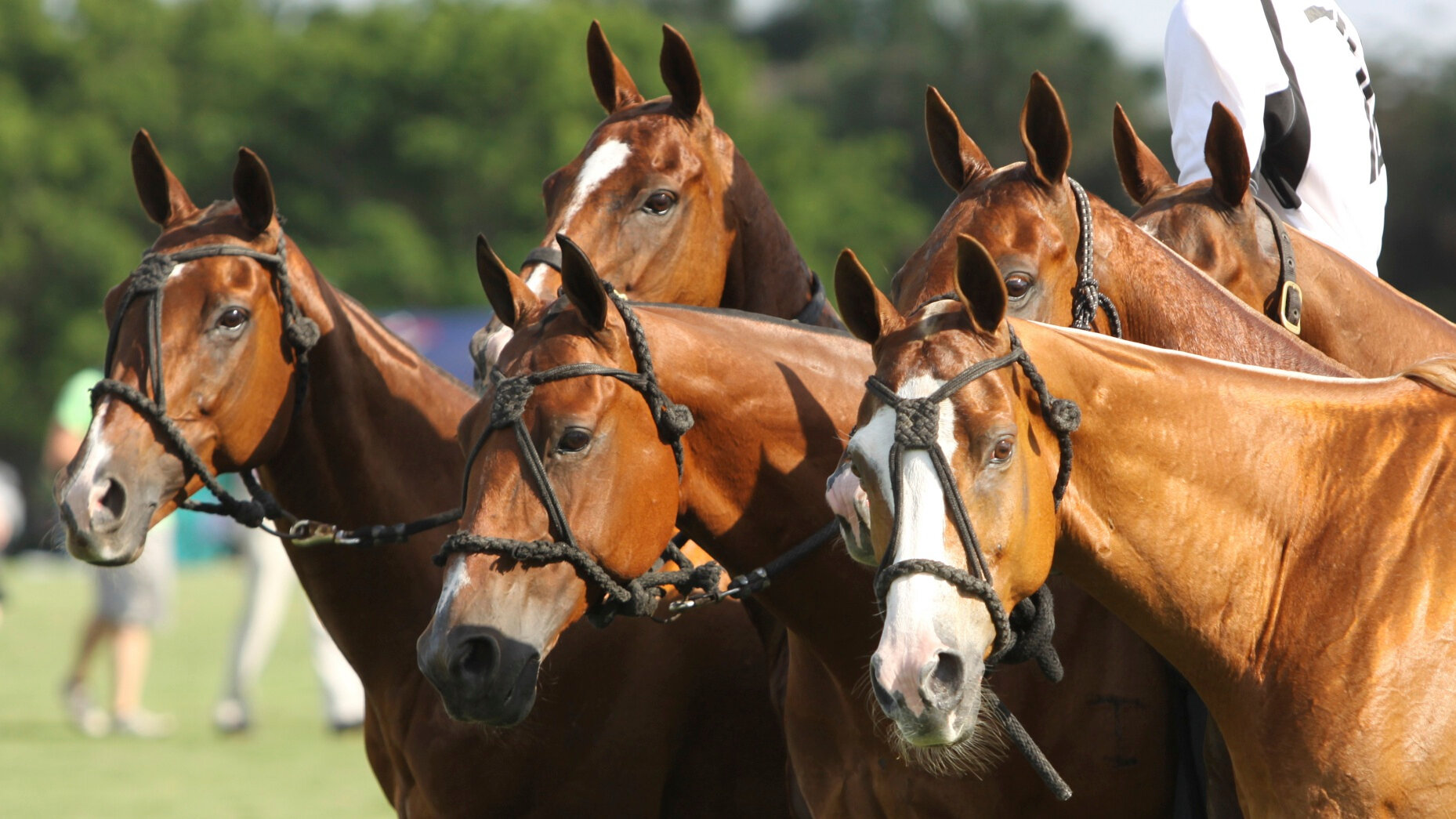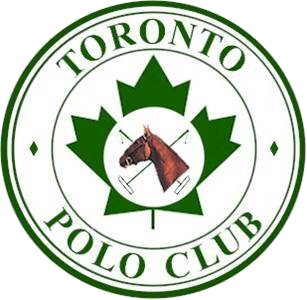
Game Basics
Here are a few basic facts to help you watch the game:
Polo is played on a ten acre grass field, 300 yards in length by 160 yards, which is the approximate area of ten football fields. Goal posts are set eight yards apart on either end of the field. The object of the game is to move the ball down-field, hitting the ball through the goal for a score. Teams change direction after each goal. The team with the most scores at the end of the match is deemed the winner.
Two teams, made up of four players each, are designated by shirt color. The players wear high boots, knee guards, and a helmet. The ponies wear protective bandages and boots to shield them from the ball or the mallet. By tradition, players wear white pants in tournaments. The mallet, made of a bamboo shaft with a hardwood head, is the instrument used to hit the polo ball.
The polo ball was formerly made of wood but is now plastic. It is about 3 to 3 1/2 inches in diameter and 3 1/2 to 4 1/2 ounces in weight. In fact, the English word POLO is derived from the Tibetan word, “pulu” meaning ball.
The surface of a polo field requires careful and constant grounds maintenance to keep the field in good playing condition. During half-time of a match, spectators are invited to go onto the field to participate in a polo tradition called “divot stomping”, which has developed to not only help replace the mounds of earth (divots) that are torn up by the horse’s hooves, but to also afford spectators the opportunity to walk about and socialize.
There are six periods or “chukkers” in a match. Each chukker is seven minutes long. Play begins with a throw-in of the ball by the umpire at the opening of each chukker, and after each goal. Only penalties or injuries may stop play as there are no time-outs or substitutions allowed (except for tack repair).
The four basic shots in polo are distinguished by the side of the pony on which strokes or shots are made. That is “near-side”, left side of the mount, and “off-side” right side of the mount. This creates the near-side forward, and back shot, and the off-side forward and back shot. Shots can also be made under the pony’s neck, across his tail, or the difficult under the belly shot, all variations of the basic shots.
A team is made up of four players, each wearing a jersey with numbers 1 to 4, which corresponds to their assigned position. Number 1 is the most offensive player, concentrating on opportunities for scoring. Number 4 is the defensive player, primarily responsible for defending his/her team’s goal. Usually, the most experienced and highest-rated players are at positions 2 and 3, with the pivotal player being number 3, who must serve as an effective field captain, or quarter back. The number 3 coordinates the offense, and passing the ball up field to his teammates as they press toward the enemy goal. Each player is also assigned an opponent to cover on defense and must be prepared to shift offensive and defensive modes and to make any play that will benefit his team.
RULES
Although there are many rules to the game of polo, the primary concept to which all rules are dedicated is safety, for the player and his mount.
The right-of-way rule is defined by a player’s position relative to the direction of travel of the ball when hit. Once hit, an imaginary line is drawn from the player to the ball, and extended ahead of the ball in the direction that it is traveling towards. This imaginary line can not be crossed by other players. In general, play will flow backward and forward, parallel to the imaginary line extended ahead of, and behind, the ball. This rule creates safe traffic patterns that enable the participants to play at top speeds and to avoid dangerous collisions.
The line of the ball may not be crossed except under special circumstances and only in such a way as to legitimately gain control of the ball. When a player has the line of the ball on his right, he has the right-of-way. This can only be taken away by “riding off” and moving the player off the line of the ball by making shoulder-to-shoulder contact.
Strategy and anticipation are two of the most important elements in polo and usually come with experience. For the spectator, keep an eye on the horses. The speed and athletic abilities of both the horse and rider are spectacular. All of these elements combined, make the fast-paced action of polo one of the most exciting and demanding sports in the world.
PLAYER HANDICAPS
Each player is assigned an individual handicap on the ascending basis of C, B, A (-2 thru 0) and 1 thru 10. This Handicap reflects the player’s ability and his value to the team. The higher the handicap the better the player (which is opposite to golf). There are only a few 10-Goal players in the World.
The team handicap is the combined handicaps of the four players. The team with the lesser handicap is granted the difference in goals (or points) prior to the start of the match. For that reason, a match may well have a “score” before based on team handicaps, prior to the start of the game.
Player handicaps are evaluated and revised annually by the United States Polo Association. Handicapping is a subjective evaluation of the individual’s horsepower, game sense, hitting ability, and overall value to a team.
PONIES
The polo ponies are central to the success of any team. They are primarily thoroughbred, often with race track experience, and considered the most athletic of equine performers because of their requirements to sprint, stop, turn and accelerate to open speed for seven minutes in duration. Although they are called “ponies”, they are actually small horses (average height 15 – 16 hands high). Players must change mounts after each chukker due to extreme demands placed on the pony. Therefore, a team usually has a minimum of 24 horses available during the match.
Most horses can be trained to play polo, however training horses to learn the game should only be taken on by experienced polo players. Beginner and intermediate players are much better off buying an already trained polo pony. Costs for ponies vary, depending on the pony’s age and the level of polo you want to play them in. A good low-goal polo pony for a beginner or intermediate rider usually costs around $10,000 Canadian.
(Reprinted with permission of the United States Polo Association, May 2005)

